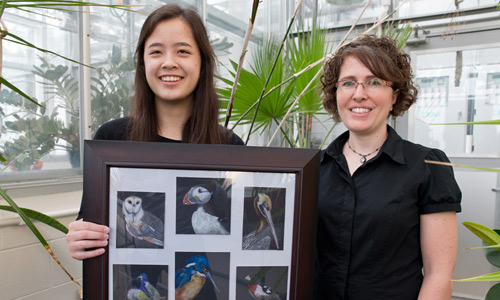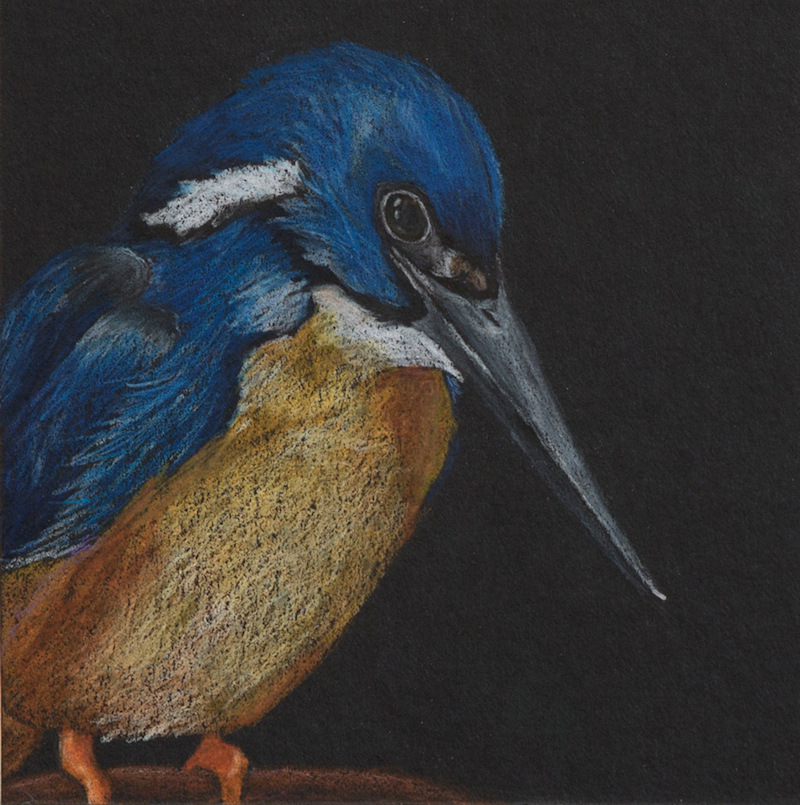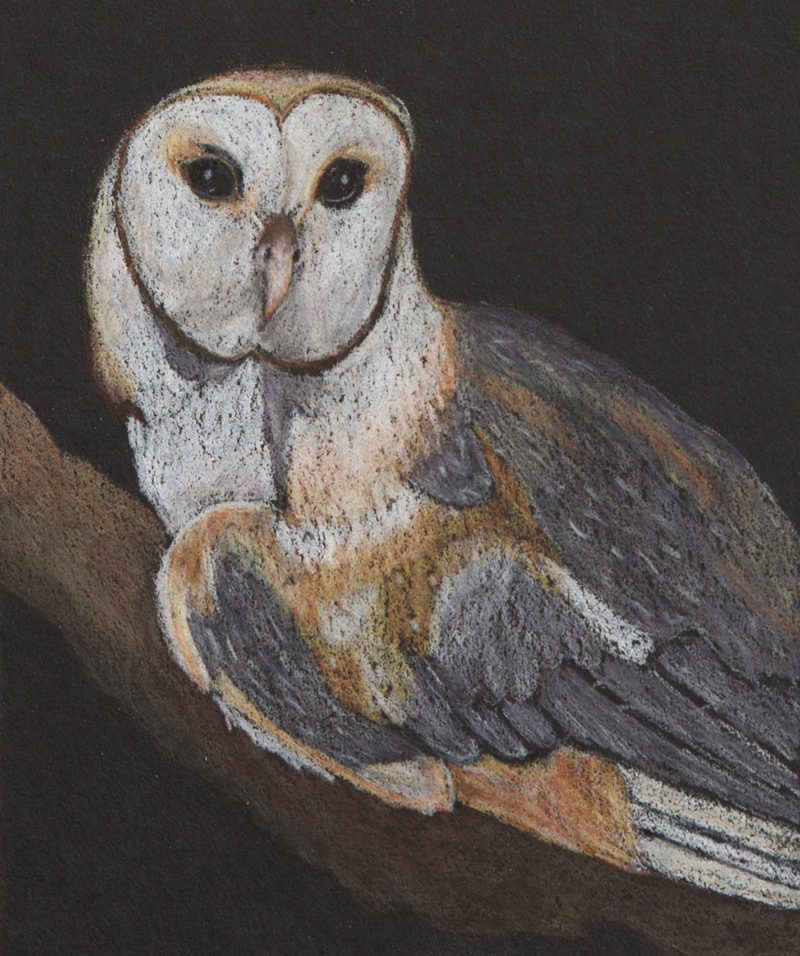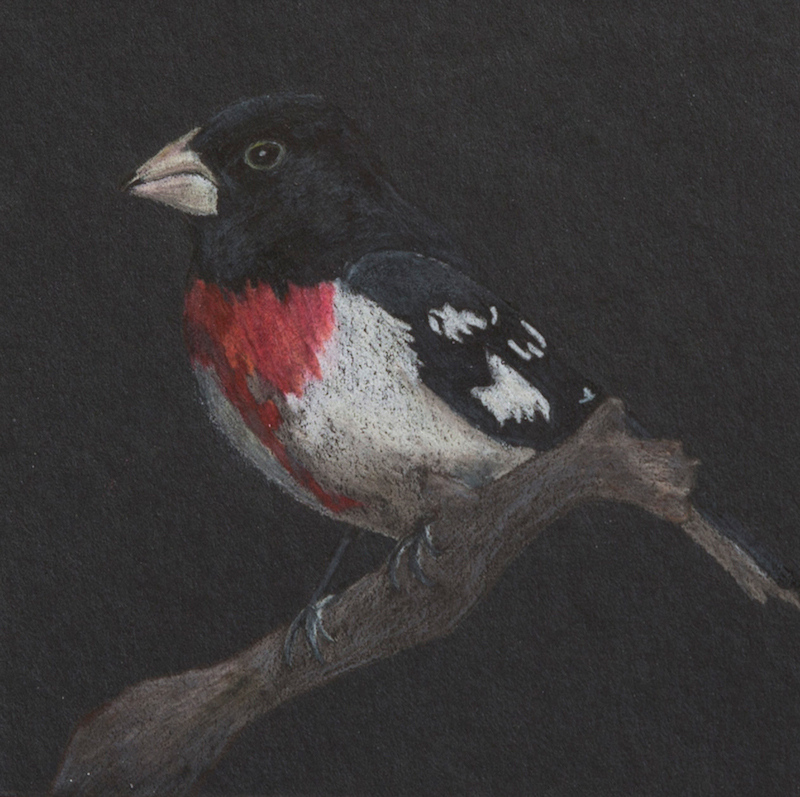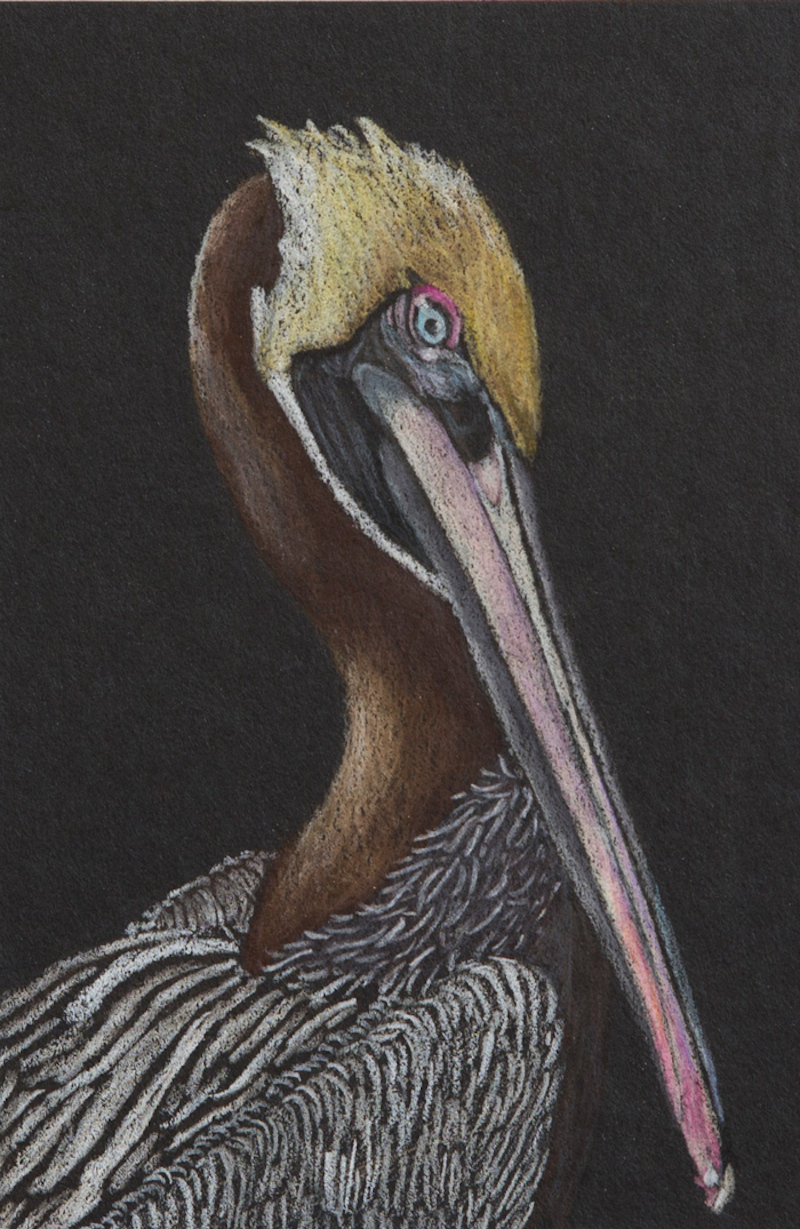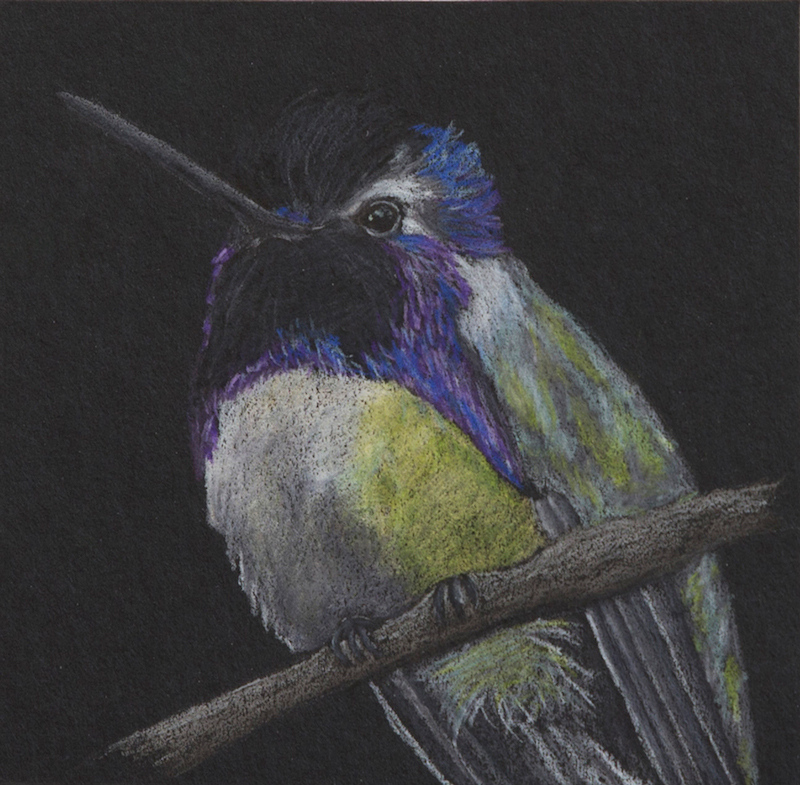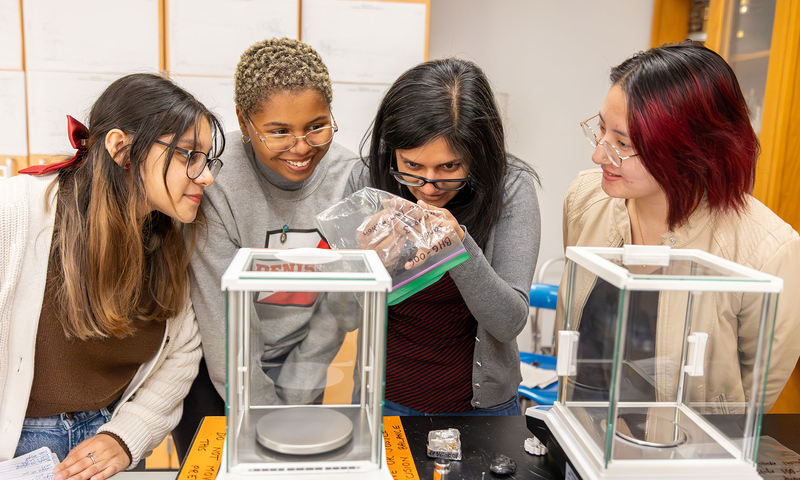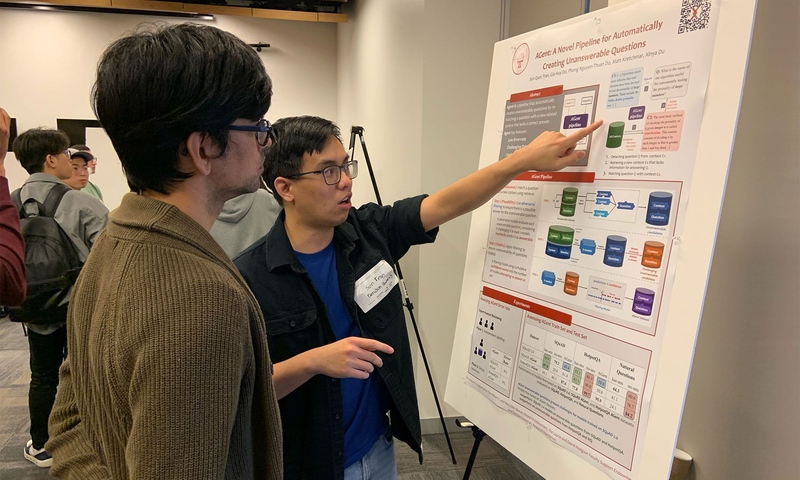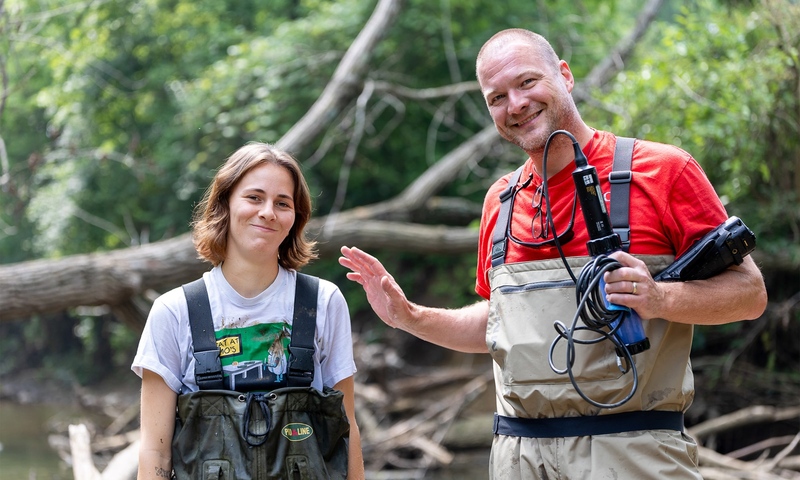Associate Professor of Biology Laura Romano likes to encourage creativity in her classes, but she was rewarded with something quite extraordinary when she assigned an optional extra credit project in her Introduction to the Science of Biology class. The project’s goal was to create something that represents a major concept in biology. The students were prompted to use a wide range of mediums such as drawing, painting, sculpture, poetry, videos and music.
Megan Van Horn decided to portray nine birds representing different adaptations of beaks.
The talented artist from New Concord, Ohio, is double majoring in chemistry and English - creative writing, but she has plenty of artistic talent too. She drew birds from ecosystems that range from the tropics to the arctic, including a toucan, barn owl, puffin and woodpecker.
“Dr. Romano has been especially good in making complex biological concepts accessible to non-majors, like me.”
When Van Horn signed up for Romano’s class, she didn’t anticipate being able to utilize her artistic skills. “This class has given me a very good overview of biology,” she says. “Dr. Romano has been especially good in making complex biological concepts accessible to non-majors, like me. And I really appreciated being able to use my talents in her class.”
Romano was delighted with Van Horn’s work. “Megan is very talented in the sciences, and it’s obvious that she’s talented in the arts as well.”
This creative component is not often found in science classes, which typically focus more on lab work then studio time, but Romano tries to incorporate the arts into all her curriculum.
“I figured out early on that some biological concepts are easier to understand visually than by simply reading about them or discussing them,” says Romano. Some of these concepts need to be represented in three or even four dimensions (adding time). She finds that by encouraging her students to think in creative ways, they master the concepts more easily.
In Romano’s Developmental Biology class, her students must prepare oral presentations that integrate an artistic element. “I’ve had students present really impressive computer animations, for example.”
Romano relieves the subjectivity of artistic merit by creating judges from a panel of peers who must assess the pieces on the metrics of creativity, perceived effort and effectiveness as an educational tool.
“I like to paint and draw myself but I understand that not everyone can rise to a high level of artistic accomplishment,” she says. “But science students are really very creative, as seen when they have to design experiments in the lab. The liberal arts ideal of learning across disciplines works very well here, especially when my students are presented with a wide range of options to showcase their talents.”
